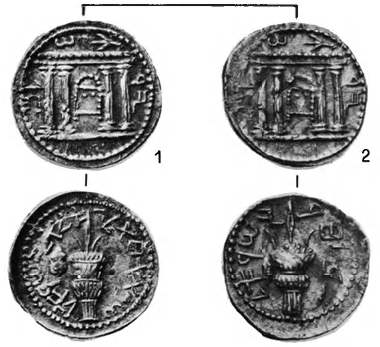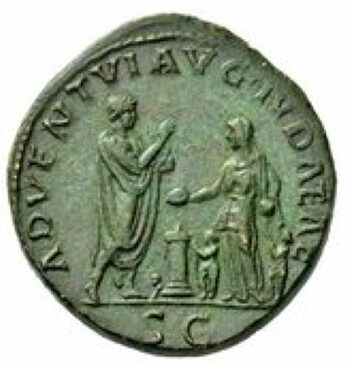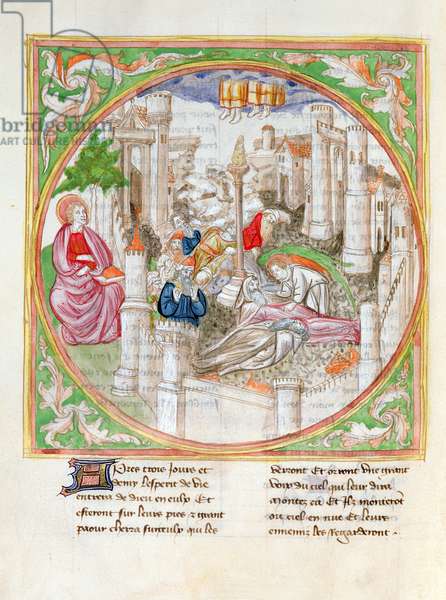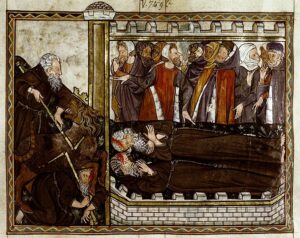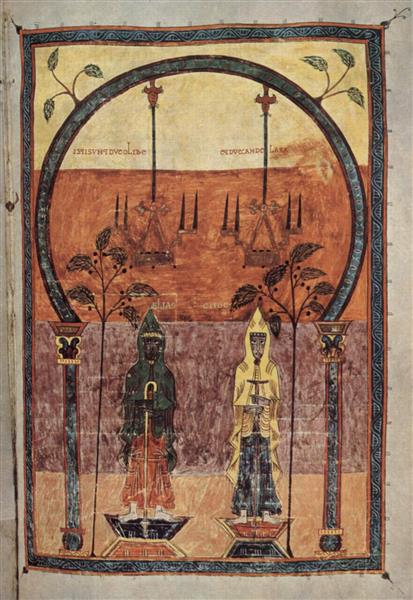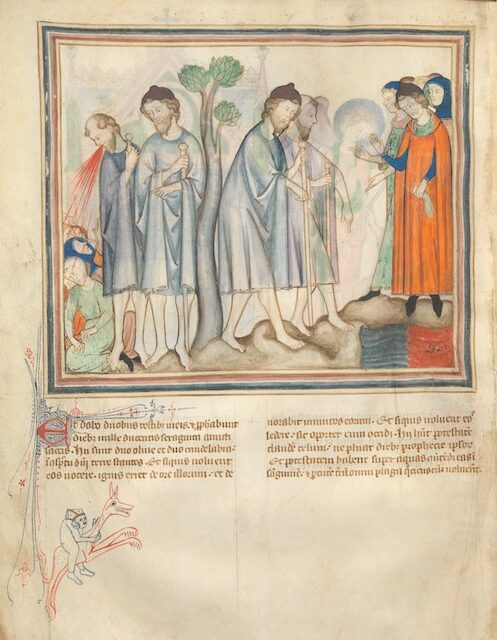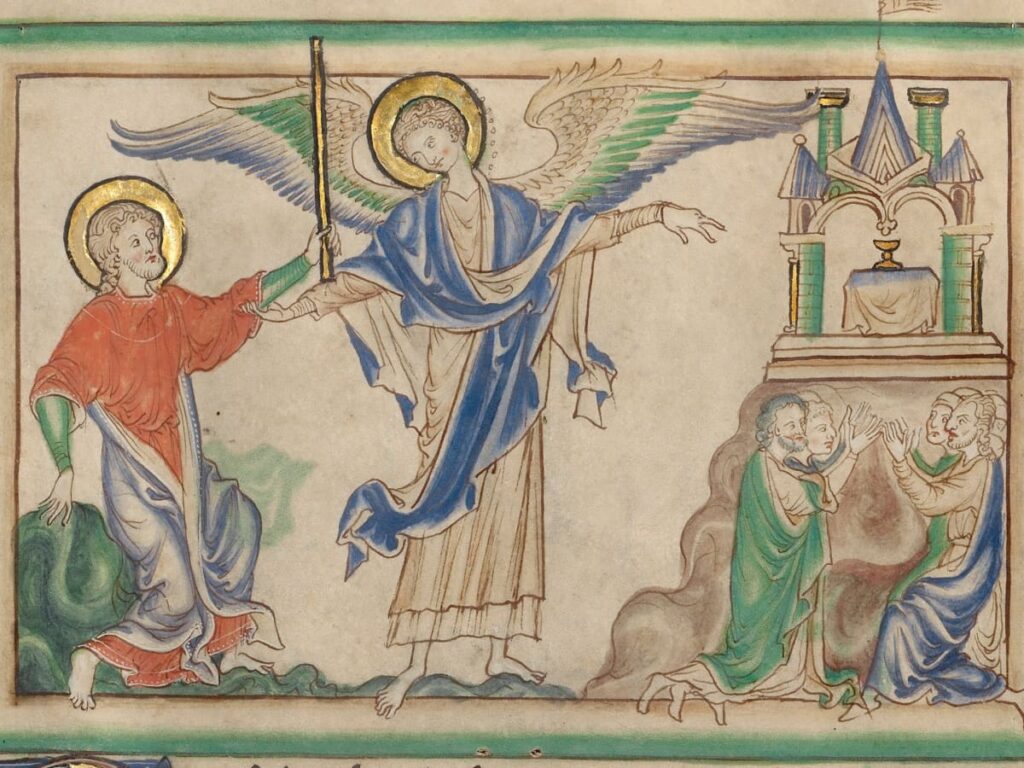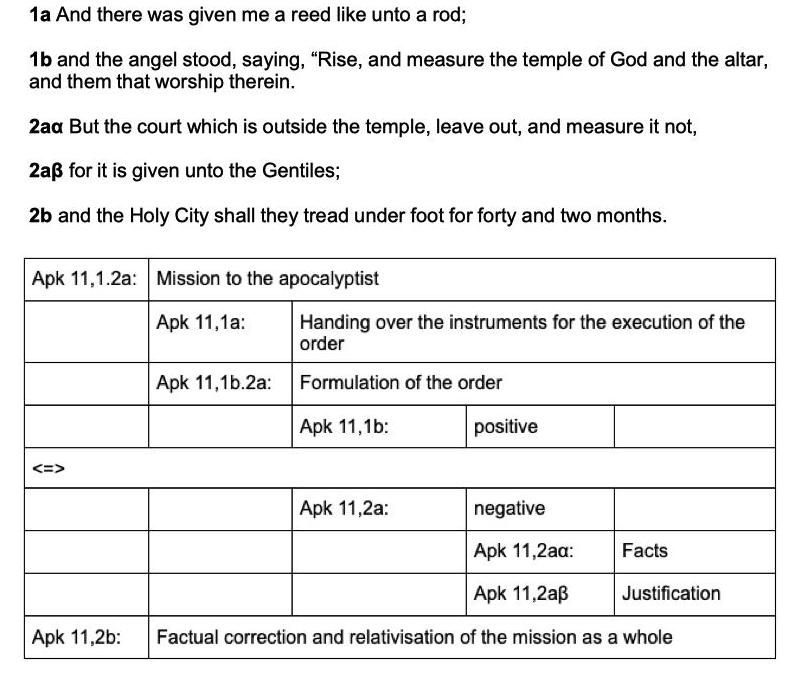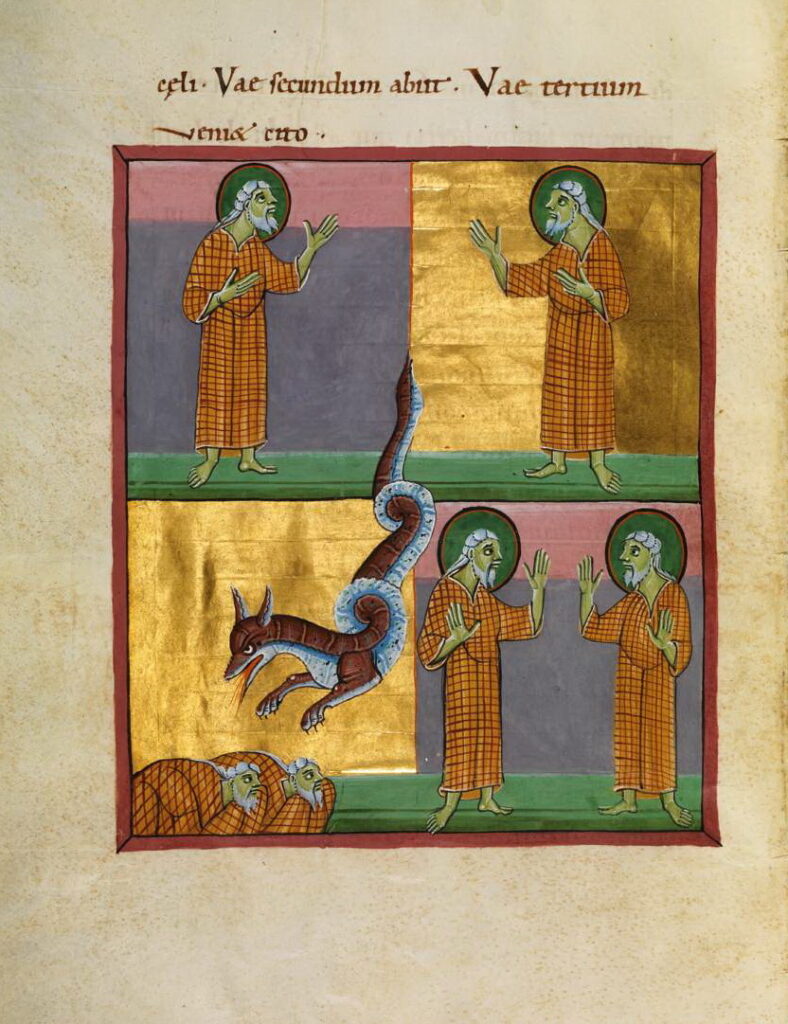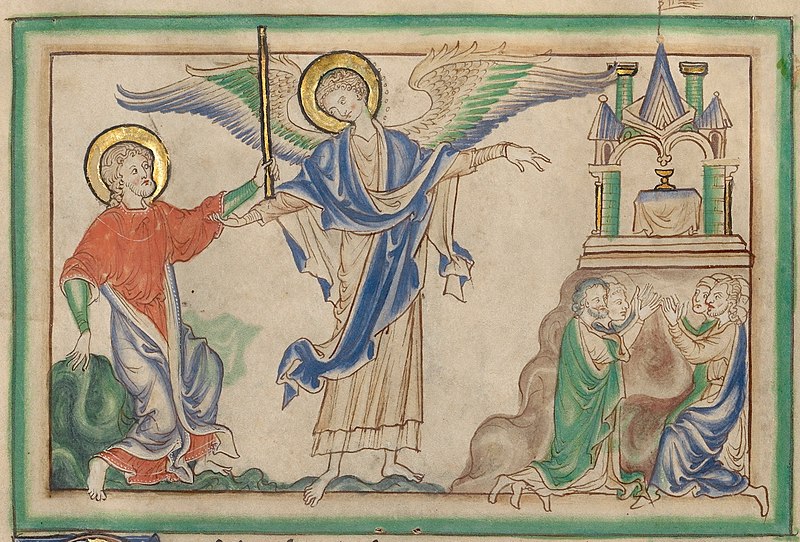
This post concludes my reading of Thomas Witulski’s three works proposing that the Book of Revelation was written at the time of Hadrian and the outbreak of the Bar Kochba War.
- The first series, taken from Die Johannesoffenbarung und Kaiser Hadrian, covered Hadrian’s identification with Zeus, his popularity as a Nero Redivivus, and his propagandist Polemon’s activities in Asia Minor and their impact on Christians there;
- the second series with Die Vier Apokalyptischen Reiter Apk 6,1-8 surveyed the years of Trajan’s conquests, the widespread Jewish rebellions and the consequences of their savage suppression, represented by “the four horsemen of the apocalypse”;
- this third round has dipped into Apk 11 und der Bar Kokhba-Aufstand to see how W understands the measuring of the temple and the two witnesses of Revelation 11.
I prefer to read works cited for myself to gain a fuller knowledge and understanding of the evidence and interpretations being raised. This has been especially helpful since I rely on machine translations of the German works and sometimes it has been a struggle to be sure I have grasped the exact idea W has sought to convey. The wider reading has led me sometimes to go beyond W’s specific content but I hope I have made it clear whenever I have done so. With this final series some of the works I have wanted to read have still not reached me so I may later return to expand on one or two parts of the discussion. I do appreciate critical comments that some readers have added. It may take me a few days to catch up with them but they are always important to help keep us honest and thorough in our explorations of this text and what it can tell us about early Christian history.
W’s final chapter brings together his analyses of the text and examination of the primary evidence for the events of the early second century.
A Contemporary Interpretation of the Measuring of the Temple (Rev 11:1-2)
I was given a reed like a measuring rod and was told, “Go and measure the temple of God and the altar, with its worshipers. But exclude the outer court; do not measure it, because it has been given to the Gentiles. They will trample on the holy city for 42 months.
If read against contemporary history, W concludes, this passage can be interpreted as an allusion to Hadrian’s visit to the province of Judea in 130 CE and his efforts to embed a Hellenistic-Roman culture that was opposed to “Old Testament” Jewish thinking. The rebels’ program to rebuild the Yahweh sanctuary in Jerusalem and to reinstall a temple priest cult should also be understood in this context.
For W, the measuring presupposes that the buildings are not yet constructed (or have been destroyed) at the time of the writing of the Apocalypse. This corresponds to the conditions in Jerusalem on the eve of the Bar Kochba revolt as Cassius Dio describes them.
W cites the many works that have discussed the thesis that Hadrian’s decision to rebuild Jerusalem as the Roman colony of Aelia Capitolina. The question in part focuses on the contradictory ancient sources. We only have an epitome of Cassius Dio’s History and that condenses the original words to:
At Jerusalem he founded a city in place of the one which had been razed to the ground, naming it Aelia Capitolina, and on the site of the temple of the god he raised a new temple to Jupiter. This brought on a war of no slight importance nor of brief duration, for the Jews deemed it intolerable that foreign races should be settled in their city and foreign religious rites planted there. (LXIX, 12, 1f)
Eusebius, however, informs us that Cassius Dio’s “cause” was rather the “result” of the war:
The climax of the war came in Hadrian’s eighteenth year, in Betthera, an almost impregnable little town not very far from Jerusalem. The blockade from without lasted so long that hunger and thirst brought the revolutionaries to complete destruction, and the instigator of their crazy folly paid the penalty he deserved. From that time on, the entire race has been forbidden to set foot anywhere in the neighbourhood of Jerusalem, under the terms and ordinances of a law of Hadrian which ensured that not even from a distance might Jews have a view of their ancestral soil. Aristo of Pella tells the whole story. When in this way the city was closed to the Jewish race and suffered the total destruction of its former inhabitants, it was colonized by an alien race, and the Roman city which subsequently arose changed its name, so that now, in honour of the emperor then reigning, Aelius Hadrianus, it is known as Aelia. Furthermore, as the church in the city was now composed of Gentiles, the first after the bishops of the Circumcision to be put in charge of the Christians there was Mark. (Church History, 1.6)
It is in theory possible to harmonize the two accounts and hypothesize that Hadrian’s declaration of his plan to build the new capital led to the outbreak of the war and that he completed that task after the war’s end. The critical question of what exactly Hadrian accomplished prior to hostilities remains. In the words of one of the scholars W references,
The contradiction can easily be understood if we examine it from a historical perspective. Hadrian declared his will to rebuild the famous and sacred city of the past around 130 CE, on the occasion of his voyage to the east. He may even have accomplished some practical steps toward the actual foundation, including the pomerium. At that stage, the Jews, who could not bear the idea of a new Greek-Roman city being built in place of their historical and sacred capital, decided to rebel. Only after the suppression of the revolt, in 135 CE, was the city actually built.
As is well known, Hadrian accompanied the foundation of Aelia Capitolina by two symbolic anti-Jewish acts. The name of the Provincia Iudaea was changed to Provincia Syria Palaestina, and the Jews were expelled from the city and its region. There is no reason to believe that Hadrian would have contemplated such symbolic acts were it not for the Bar Kokhba revolt. It seems likely that the Emperor intended to enhance his reputation as a builder and restorer of ruined and unfinished monuments and as a benefactor of cities. It also seems likely that the Emperor expected to be embraced and admired by the citizens of Iudaea, and particularly by the Jews, for rebuilding the famous city of Jerusalem, as did the citizens of many other cities, including Gerasa (Jerash) of Arabia.
Though such an interpretation cannot be proved, it seems to me very reasonable. The conclusion that Hadrian had in mind the restoration of a city named Hierosolyma is more likely than the conclusion that he had decided on a completely new name already as early as 130. It should be remembered that although Jerusalem was indeed ruinous at that time, it was not totally deserted, and life had begun to be revive[d]. The replacement of the famous historical name Jerusalem by Aelia Capitolina was a very severe and symbolic act, analogous to the changing of the name Iudaea into Syria Palaestina, or in short, Palestine. In both cases the Imperial administration intentionally suppressed Jewish national feelings. (Tsafrir, 32f — recall that coins personified Judea in Greco-Roman dress)
In trying to make the most of Cassius Dio’s words through his epitomizer, Xiphilinus, Eliav concludes,
To summarize, the clause describing Hadrian’s actions on the Temple Mount bears the stamp of a Christian writer such as Xiphilinus (or any one before him). This conclusion is derived from content gaps in the structural design of the passage, from its vocabulary, and from the theological tendencies it reflects. Dio’s original version has been lost, but it might be possible to reconstruct it using the clues in the second segment. Describing the events from the Jewish perspective, Dio tells of the Jews’ dissatisfaction with the foreign shrines placed in their city (ίuερά άλλότρια έν αύτή ίδρυθήναι). It may be that the first segment described the same situation, that is, Hadrian’s founding of a foreign city and building a pagan shrine (or shrines) there. In the course of paraphrasing this passage, a later writer turned the situation into a theological confrontation between Hadrian and the Jewish God. This writer re-situated the pagan shrine, shifting it from the city in general to the Temple Mount in particular. Moreover, he painted a neutral act customary in the establishment of a new colony in the harsh colors of a religious confrontation by using a “loaded” verb and referring to the temple by a name familiar to both Jewish and Christian readers.67
This conclusion extracts the historical barb from the story of the pagan shrine on the Temple Mount, and shows it to have been planted by a religiously motivated writer. (Eliav, 142f)
W’s view is that hopes for a rebuilt temple were dashed and that the author feared the war would end in defeat. If the fate of Jewish rebellions in the time of Trajan had not been warning enough, it appears that the fate of the Jewish rebels was sealed when Hadrian called Severus from Britain to suppress the uprising.
The historical reference of Rev 11:1-2a to the first phase of the Bar Kokhba revolt becomes even more conclusive if it is assumed that the decision to (re)found Jerusalem as the Roman colony of Aelia Capitolina and, in connection with this, the decision to erect a pagan sanctuary there can be dated to the time immediately before the military escalation, i.e. around 130 AD. Then the statements of Rev 11:1-2a could be referred to these decisions of Hadrian without any problems: The apocalyptist is supposed to measure the temple, the θυσιαστήριον [= altar] and the people worshipping there for the purpose of rebuilding or reconstruction. (W, 306 – translation)
The prophecy of 11:2b that the nations will trample the city of Jerusalem underfoot, robbing it of its religious identity,
. . . corresponds entirely to the Hellenistic-imperial ideology propagated by Hadrian in the context of his visit to the province of Judea, which will ultimately win the day and leave no room for the continued existence of a more or less independent Judean state with a decidedly Old Testament Jewish religiosity inherent in and shaping it. (ibid)
The author wrote the Apocalypse soon after the outbreak of the Bar Kochba war. He used the future tense because he felt its doomed outcome to be inevitable.
A Contemporary Interpretation of the Two Witnesses (Rev 11:3-13)
If we read 11:3-13 against the events of the Second Jewish War the following scenario emerges: Continue reading “Revelation 11: Measuring the Temple and Two Witnesses – A Contemporary Interpretation”

